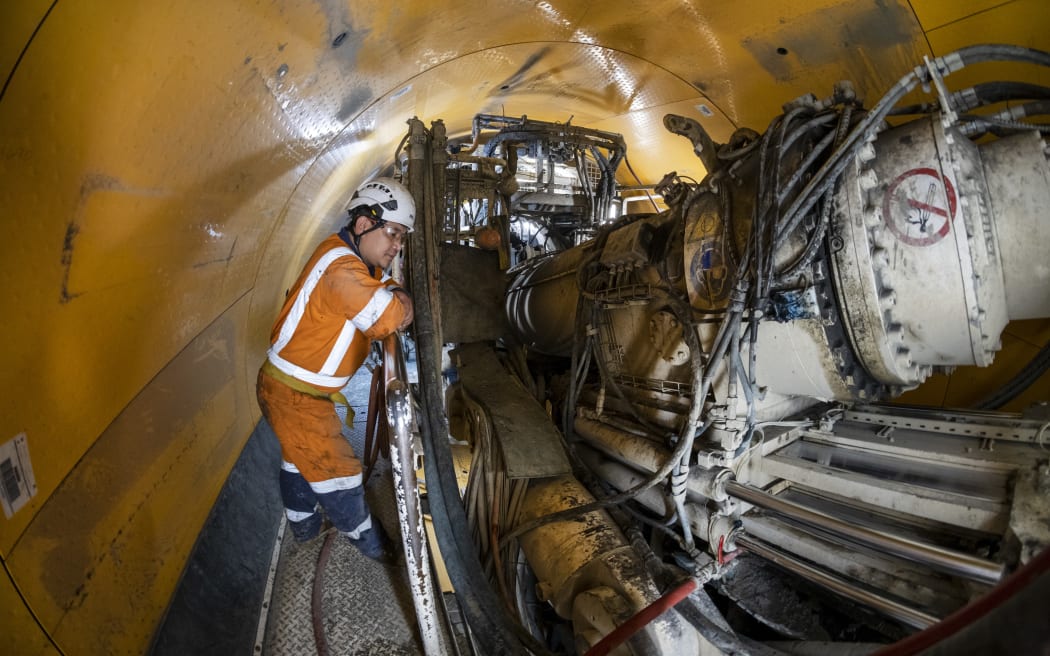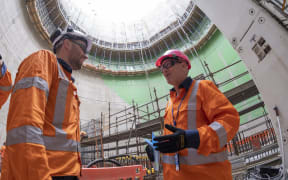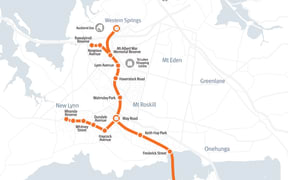
The boring machine Hiwa-i-te-Rangi when it was at the deepest point of the project. Photo: Simon Runting,
The giant Central Interceptor tunnel being bored underneath Auckland city is about to reach the half way mark.
The tunnel crosses underneath the Manukau Harbour from Māngere and is currently at May Road. Its end point is at Western Springs.
The project is the answer to decades of sewage spewing from old pipes every time it rains. Once up and running Central Interceptor will prevent the majority of wastewater overflows, when the volume of stormwater exceeds the pipes' capacity, resulting in wastewater overflowing into creeks and streams and contaminating them.
Watercare's Central Interceptor executive programme manager Shayne Cunis said they have been knocking over the milestones.
"A really big one happens on Monday morning at about 9am, we will break through into May Road, Mt Roskill at a depth of about 70 metres below the surface - it represents two years of just incredibly hard work of tunnelling."
The project was "a super sized tunnel" which was 4.5 metres in diameter and designed to pick up wastewater and stormwater from central Auckland and transport it to the Māngere treatment plant, he said.
"It will be highly treated before discharge and what it will do is it will clean up the environment, it's a legacy project, it's a once in a generation project."
Currently, every time it rained in central Auckland there were overflows, primarily of stormwater but also some wastewater, which had a negative impact on the environment, he said.
Cunis said when they started the project he did not envisage what they would have to go through before it was completed.
"We've had drought, we've had floods, we've had tsunami risks, global pandemics - you name it we've had to battle through it, and I'm just really proud where we've got to."
The project was not due to be completed until 2026, "but when it's done it will be a game changer for Auckland", he said.
The southern section of the tunnel will be completed upon reaching May Road with about half of the tunnelling done, he said.
Over the next year that section of the project would be brought into service which would provide some resilience for the existing ageing infrastructure and allow some long overdue maintenance to take place, he said.
The first suburbs to benefit from the tunnel would be around Mt Roskill, Onehunga, Hillsborough and out to Blockhouse Bay, he said.
"We'll start to see some of the benefits but the real benefits come when we finish the full tunnel all the way through into Grey Lynn."
The tunnel was very much like Waterview except that it was three times as long, he said.
"It's a segmental tunnel, and then on top of that we've got two smaller tunnels that join into the side - we completed the first one earlier in the year and we've just started the second one."
The smaller tunnels took the sewerage from people's houses into the Central Interceptor, Cunis said.
The boring machine called Hiwa-i-te-Rangi is 190m long or the size of two football fields "and it's just constantly burrowing underground" digging about 16m per day, he said.
There were up to 30 people at the face of the machine, 24 hours a day, he said.
At its deepest the Central Interceptor was 110m below ground and there was some very complex engineering to ensure that the tunnel boring machine came out at exactly the right place, he said.




